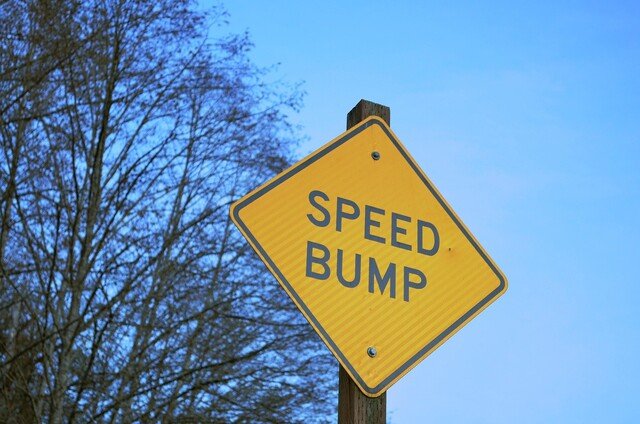The District of Coldstream is exploring the potential use of temporary rubber speed bumps as a traffic calming measure. The topic will be discussed during the upcoming committee of the whole meeting, where officials aim to learn more about the costs, durability, and practical uses of these devices.
A staff report submitted before the meeting shows that the council had requested an assessment of temporary speed bumps to determine if they could be useful in slowing vehicles in key areas of the community.
These speed bumps are made of rubber and are available in standard lengths of four or six feet. Their height varies from two to three inches, depending on the product. They are designed for areas where vehicle speeds are expected to stay between 8 and 16 km/h. This makes them ideal for parking lots or areas where very slow driving is necessary.
Officials also note that these speed bumps could be useful in areas near recreational zones, where posted speed limits are below 20 km/h. Slowing traffic in these areas could make it safer for pedestrians, cyclists, and children.
One of the benefits of using temporary speed bumps is their flexibility. They can be installed for part of the year or moved between different locations as needed. This makes them a good choice for short-term safety improvements or for controlling traffic near special events. However, these bumps need to be removed in winter to allow for snow plowing and street maintenance.
Whenever the bumps are removed, crews must seal the bolt holes left in the pavement. If this is not done, water can seep into the road surface and cause damage over time.
Despite their potential, the report also outlines some limits. Coldstream roads may not be well-suited for widespread use of these devices. In certain locations, such as construction zones, they might be more effective.
Staff also raised concerns about how drivers react to these speed bumps. Many drivers try to avoid them because they are uncomfortable to drive over. This behavior often results in vehicles swerving toward the edges of the road, which can damage road shoulders and pavement edges. Over time, this could lead to extra maintenance costs.
The price for one speed bump that spans both lanes of traffic is estimated at around $1,300. This cost does not include taxes or shipping. While not extremely expensive, the ongoing costs for moving, maintaining, and repairing roads around the bumps need to be considered.
The upcoming meeting will allow officials to weigh the benefits and drawbacks of using these traffic tools. They aim to find out whether temporary speed bumps are a practical solution for slowing traffic in certain areas of the district. Input from staff and public feedback will likely play a key role in the final decision.
The district continues to look for safe and cost-effective ways to reduce speeding and improve road safety. This review of temporary rubber speed bumps is part of a broader effort to address traffic concerns while keeping infrastructure costs under control.
As Coldstream moves forward with its evaluation, local residents may soon see some of these rubber speed bumps tested in select areas. If successful, they could become a regular tool used to manage speed and increase safety in neighborhoods and near popular community spaces.

